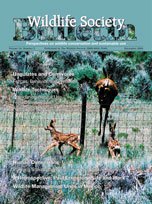Radiotelemetry provides an opportunity to measure animal behavior when other methods are not feasible, but triangulation errors limit the grain at which habitat relationships can be inferred. Additionally, inferred behavioral patterns often are biased toward times when organisms are accessible; often, for nocturnal organisms, when the organisms are resting. We developed an automated radiotelemetry system that is precise, temporally unbiased, and cost-effective. The system consisted of a sensor grid composed of radio receivers that detect the presence of a radiocollared animal within a measurable, adjustable area. The aerial extent of detection is testable, precise (mean error <0.5 m), and consistent. After the sensors are installed, data collection effort is minimal. We tested this system by collecting microscale habitat-use data on snowshoe hares (Lepus americanus) in eastern Idaho, USA. This system will be useful in applications where extremely precise location data and representative sampling across time are important for assessing use patterns. It is most useful for smaller animals where the spatial constraints are not limiting and Global Positioning System collars are not currently an option.
How to translate text using browser tools
1 December 2006
A Cost-Effective System for Measuring Microscale Habitat Use of Small Mammals with High Precision
GREGORY W. MCDANIEL,
KEVIN S. MCKELVEY
ACCESS THE FULL ARTICLE
It is not available for individual sale.
This article is only available to subscribers.
It is not available for individual sale.
It is not available for individual sale.

Wildlife Society Bulletin
Vol. 34 • No. 5
December 2006
Vol. 34 • No. 5
December 2006
Lepus americanus
microhabitat
radiotelemetry
sensors
snowshoe hare




